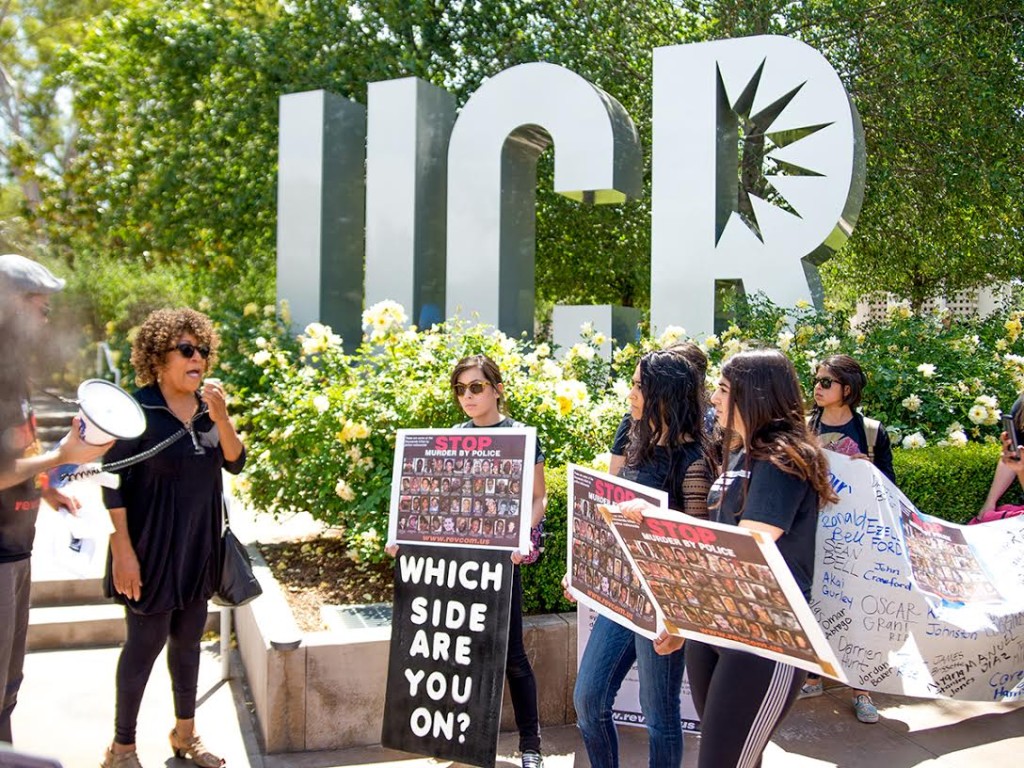
In my five years at UCR, I’ve witnessed the Occupy UC protests reach a crescendo here on campus, complete with drum circles, police in riot gear, news vans and helicopters. I’ve witnessed a countless number of die-ins and marches protesting a range of issues from police brutality to sexual assault on college campuses.
The passion exhibited by students leading the protests has motivated me, more than they will ever know. However, I’ve also witnessed the tendency for these protests to blend into the campus landscape or cause students to ignore the protesters’ core message. Some unsolicited advice for my peers as they continue this tradition: Give students no choice but to feel your message; give them your art.
I will never forget the day that my friend showed me a video of a protest at the University of Sonora, Mexico against the systematic disappearance of the students of Ayotzinapa Rural Teachers’ College. The group of at least 43 protesters staked out one area of their campus and walked around in a circular formation, crisscrossing each other, wearing torn and bloodied shirts while singing alongside a strumming guitar about an unjust government and the disappeared “normalistas,” the mostly indigenous and low-income student teachers.
Suddenly, drumbeats like gunshots cut through the music and thundered about. The students huddled together with their hands up, yelling in unison, “Warning! We are students! We are unarmed!” One by one on a different drumbeat, a student would stand up and shout the name of a disappeared. After the list was exhausted, a succession of drumbeats rang out and every student demonstrating dropped to a heap on the floor.
The group was methodical in the images and sounds they wanted to imprint on passersby. They not only caused their peers to stop in their tracks and pull out their phones and cameras to document the demonstration, through media coverage and the internet they were able to create a lasting impression on people from all over the world. Chills fluttered down my spine as I watched the video over and over again on my phone. It was as if for a brief moment, the students lived and died right in front of you.
This piece of performance art forever connected me to the unrelenting struggle for justice in Mexico. The group didn’t reuse methods other schools had been using. They didn’t put on an overly produced or complex performance that required money and light shows. All their performance required was coraje (dignified rage) and a bit of creativity.
A die-in used to be eye-catching, but that was before it was repeated across the country ad infinitum. Nowadays, students will tiptoe their way right through a die-in on their way to class, not thinking twice about what’s being protested against. Additionally, just blocking off the library entrance isn’t going to make any student who wouldn’t already agree with you think about Tamir Rice, Sandra Bland or any other unarmed civilian savagely gunned down by police, unless you can stimulate empathy.
We live in post-1960s America. We live in a world of smartphones, 3-D printers and virtual reality. If we want to get the attention of the Snapchat generation and make them sincerely aware of the struggle, we must craft provocative images that lodge themselves deep in their minds so that when they lie awake at night in a sea of existential darkness, they’re thinking about your art.








